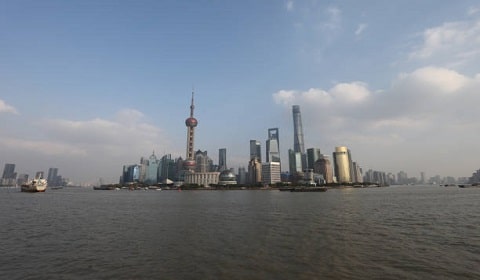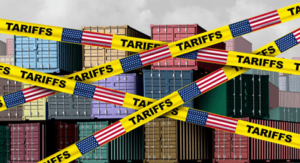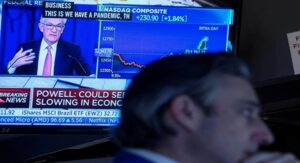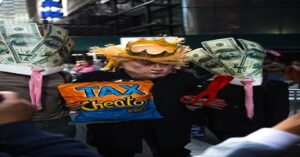
China's Economic Outlook: Reforms, Challenges, and Global Impact
China’s economic outlook reflects a narrative of shifting tides and evolving paradigms. In 2010, China emerged as a global economic powerhouse, boasting record-breaking growth rates and dominance in exports.
The decade witnessed a surge in Chinese equity markets, fueled by a flurry of initial public offerings. However, as the years unfolded, cracks in the foundation became evident. Structural imbalances, including over-reliance on debt-driven investment, surfaced, challenging the sustainability of China’s growth model.
Today, the narrative has pivoted towards questions of longevity, with doubts looming over the feasibility of maintaining targeted growth rates amidst mounting economic challenges and a shift towards state-centric policies under President Xi Jinping.
China’s Economic Outlook
China’s ascent to economic prominence in the early 21st century mesmerized the global stage, but current events spotlight uncertainties surrounding its growth trajectory and management of inherent structural obstacles, including China’s economic outlook.
Despite its meteoric rise, questions arise about the long-term viability of its economic model. Challenges such as demographic shifts, environmental degradation, and geopolitical tensions cast shadows over China’s path forward.
The world keenly observes as China confronts these hurdles, testing its resilience and adaptability on the global stage. Whether China can sustain its growth momentum while addressing these complexities remains a significant question, shaping not only its own future but also influencing the dynamics of the global economy and geopolitics.
This article examines the current economic outlook for China, highlighting reforms, challenges, and the global impact of its trajectory.
Table of Contents
1. The Rise of China
In 2010, China’s economic dominance was underscored globally, with it being the leading exporter and maintaining an unprecedented 10% average GDP growth for thirty years. This remarkable feat positioned China as an economic juggernaut, with its equity markets surpassing global standards.
China’s ascent during this period not only solidified its status as an economic superpower but also reshaped perceptions of its role in the global economy.
China’s economic outlook in the year marked a turning point, showcasing its ability to sustain remarkable growth and influence markets on a scale unseen before, prompting worldwide recognition of its economic prowess and potential.
2. Structural Challenges
Despite China’s outwardly impressive economic growth, there are lurking structural vulnerabilities that endanger its sustainability, including concerns about China’s economic outlook.
The economy’s overreliance on debt-driven investments and inadequate domestic consumption present significant concerns for policymakers and observers.
While the facade of prosperity may have obscured these issues initially, they have gradually emerged as pressing challenges in recent years.
This fragility beneath the surface threatens to destabilize China’s long-term economic trajectory, necessitating careful attention and strategic interventions to mitigate risks and ensure a more balanced and sustainable growth model.
3. Slowdown and Shift in Priorities
Amid a slowdown in economic growth, China faces scrutiny over its reform agenda’s pace, including China’s economic outlook. Doubts linger about the sustainability of the government’s 5% growth target and the attractiveness of investing in its economy.
Recent economic challenges prompt reflections on China’s trajectory, sparking debates on whether it has peaked. The government’s shifting priorities add complexity to the situation, raising concerns about the future direction of reforms.
As China navigates these uncertainties, global observers closely monitor its economic policies and prospects, recognizing the significant implications for the world economy.
4. Xi’s Policy Shift
Under President Xi Jinping’s tenure, China has undergone a pronounced economic policy transformation, marked by heightened state intervention and control, including China’s economic outlook. Notable instances include stringent regulatory measures targeting the tech industry and the integration of Communist Party members into private enterprises.
This shift signals a departure from previous liberalization efforts, positioning the private sector more firmly under the party’s influence. The evolving scenery has sparked apprehension among investors and international onlookers regarding the implications for market dynamics and foreign investment.
Concerns linger over the potential impact on economic growth and the extent of governmental oversight in shaping China’s economic trajectory.
5. Reforms Amid Challenges
Amidst adversities, China has undertaken reforms across sectors, primarily driven by necessity rather than strategic intent. China’s economic outlook has played a significant role in shaping these reforms, with initiatives aimed at opening up financial markets and enticing foreign investment being marked by extensive regulatory interventions, fostering a nuanced and uncertain business prospect.
The nation treads cautiously, striving to strike a delicate equilibrium between reformative measures and authoritative control, as it charts its economic trajectory. Despite challenges, China’s reform efforts persist, reflecting a dynamic response to evolving global economic dynamics.
6. India’s Ascendancy
As China grapples with economic challenges, including uncertainties surrounding China’s economic outlook, India emerges as a dynamic alternative. With a projected average GDP growth rate surpassing China’s, India’s youthful population and liberalizing economy offer promising opportunities for investors and businesses.
Despite facing challenges like bureaucratic inefficiencies and political uncertainties, India’s progress in digital infrastructure and economic reforms garners global attention. The country’s vibrant startup ecosystem, coupled with initiatives like “Make in India”, “Next China” and “Digital India,” attracts foreign investment and fuels innovation.
Additionally, India’s strategic location and growing consumer market make it an attractive destination for multinational corporations seeking to diversify their operations. As India continues on its path of development, it presents itself as a compelling option for those looking to capitalize on Asia’s economic potential.
7. Japan’s Quiet Revival
Once viewed as a stagnant economy grappling with deflation, Japan has experienced a quiet but significant transformation in recent years. Through a blend of accommodating monetary policies, structural reforms, and demographic changes, Japan’s corporate sector has been revitalized.
Emphasizing corporate governance, immigration, and rejuvenating the workforce, Japan is forging a trajectory towards sustainable economic expansion and enhanced competitiveness. China’s economic outlook plays a crucial role in shaping Japan’s strategies for future growth.
By embracing change and implementing targeted reforms, Japan is positioning itself as a resilient player in the international economic aspect, poised to capitalize on emerging opportunities while addressing longstanding issues.
Bottom Line
China’s economic outlook is characterized by a mix of reforms, challenges, and global implications. While the country continues to grapple with structural issues and policy shifts, its trajectory remains uncertain.
Against this backdrop, India’s rise as a vibrant economic alternative, China’s economic outlook, and Japan’s quiet revival offer contrasting narratives that underscore the evolving dynamics of the Asian economic situation. As China navigates its path forward, the global implications of its economic decisions will reverberate far beyond its borders, shaping the future of the global economy.





